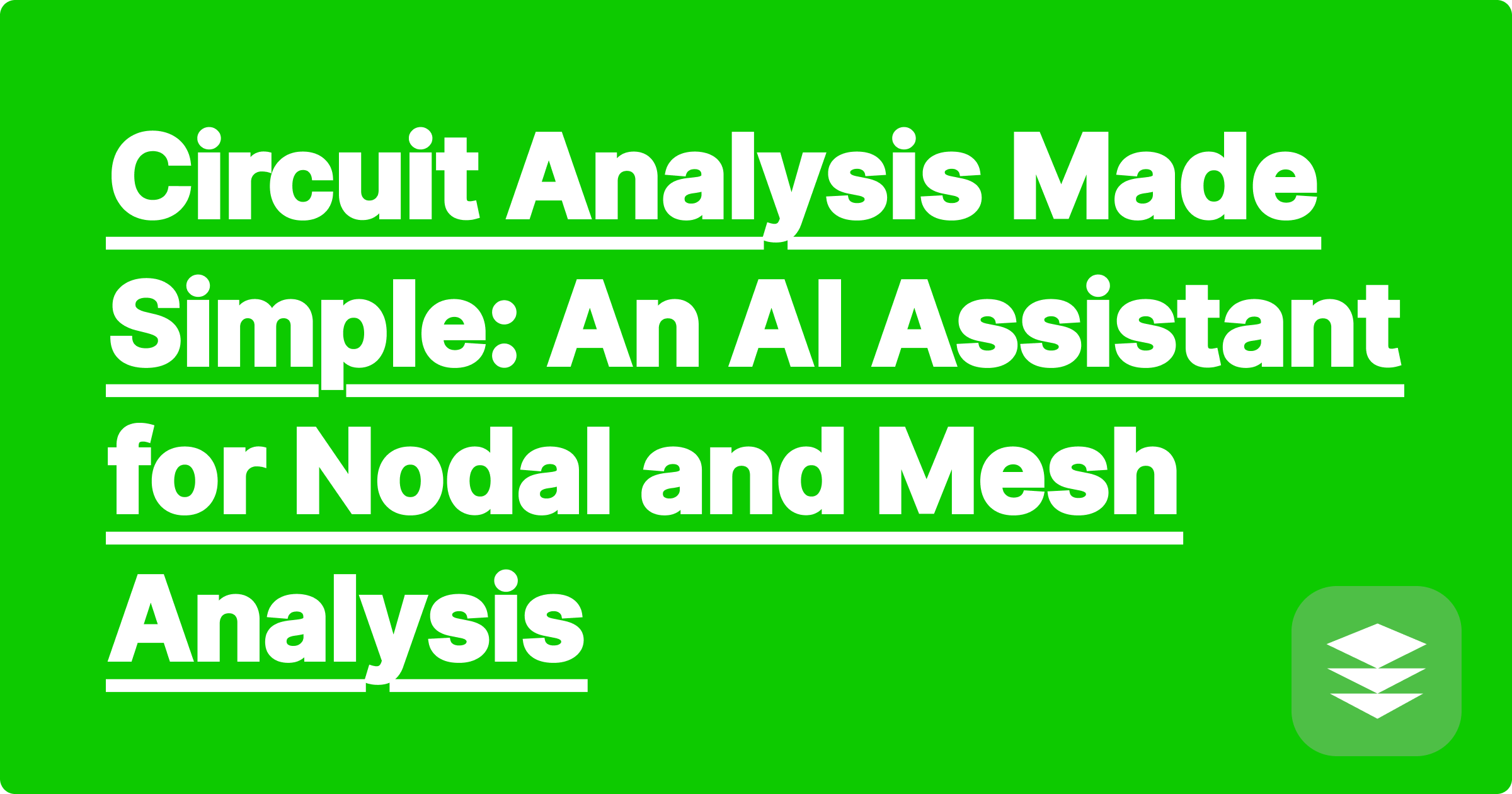
Welcome to Circuit Analysis, the foundational course for every electrical and computer engineering student. It's also the first major hurdle where you realize that the real challenge isn't just understanding Ohm's Law; it's the tedious, error-prone algebra required to solve a circuit with multiple loops and nodes.
Setting up the equations for Nodal Analysis or Mesh Analysis is a crucial skill. But once you have a system of three (or more!) simultaneous linear equations, the process of solving for the voltages and currents by hand is a time-consuming grind. A single misplaced negative sign can cascade into a completely wrong answer, and finding the mistake is a nightmare.
What if you could focus on the setup—the part that demonstrates your understanding of circuit theory—and let a machine handle the tedious algebra? This is where a powerful circuit analysis solver becomes an engineering student's best friend. This guide will show you how an AI assistant can act as a nodal analysis calculator step by step, saving you time and ensuring your final answers are accurate.
For any non-trivial circuit, the analysis process creates a system of linear equations.
The engineering skill lies in correctly applying KCL and KVL to formulate these equations. The rest is matrix algebra. Manually solving a 3x3 or 4x4 system using substitution or Cramer's rule is slow and offers little educational value after the first few times. This is where you waste the most time and make the most "silly mistakes."
Think of a tool like GPAI Solver as the perfect combination of a circuit expert and a powerful calculator. It helps you where you need it most.
This is the part you should always do yourself. Draw your circuit, identify your nodes or meshes, and write down the KCL/KVL equations. This is the core skill the course is designed to teach.
For example, for a 2-node circuit, you might derive:
Now, instead of spending the next 15 minutes on tedious algebra, you delegate.
[Image: A screenshot of the GPAI Solver interface. On the left, a user has input two linear equations for Nodal Analysis. On the right, the AI shows the step-by-step matrix solution to find V1 and V2. Alt-text: A circuit analysis solver showing the step-by-step solution for a nodal analysis problem.]
With the correct node voltages or mesh currents, you can now quickly calculate any other value in the circuit (e.g., the power dissipated by a specific resistor) with confidence, knowing your foundational values are correct.
FeatureThe Manual WayThe AI-Assisted WayFocus80% algebra, 20% circuit theory.10% algebra, 90% circuit theory.SpeedSlow. A single complex circuit can take 30+ minutes.Fast. The entire algebraic solution takes seconds.AccuracyHigh risk of manual calculation errors.Computationally precise.LearningYou get bogged down in algebra, not concepts.You focus on the correct setup, which is the key engineering skill.
"I used to spend more time finding my algebra mistakes than I did learning circuit laws. Now, I focus on getting the KVL/KCL equations right, and I let GPAI handle the matrix math. My homework takes half the time, and my conceptual understanding has never been better."
Your circuits course is designed to teach you how to think like an electrical engineer, not an algebra machine. By automating the most tedious and error-prone part of the analysis, you free up your time and mental energy to focus on what truly matters: understanding the behavior of circuits.
A: Yes. You can upload a picture of your circuit diagram and ask, "Write the KVL equations for the meshes in this circuit." However, for learning purposes, it is highly recommended that you attempt to write the equations yourself first and then use the AI to verify your setup. This is the most effective way to learn.
A: Yes. The underlying math is the same. As long as you can correctly formulate the system of linear equations (which will now include the dependency relationships), the AI can solve the resulting system for the unknown variables.
A: SPICE (like LTspice) is a powerful simulation tool that gives you the final numerical results. It's excellent for verification. An AI tool like GPAI Solver is more of a tutorial tool. It shows you the analytical, step-by-step algebraic process, which is what you need to show in your homework and understand for your exams.
Stop letting tedious algebra be a barrier to your success in circuit analysis. By leveraging an AI assistant as your personal nodal and mesh analysis calculator, you can check your work, save countless hours, and build a deeper, more intuitive understanding of the principles that govern every electronic device in the world.
Ready to simplify your circuit analysis?
[Try GPAI Solver today. Get step-by-step help with your nodal and mesh analysis homework. Sign up now for 100 free credits and ace your next assignment.]
Circuit Analysis Made Simple: An AI Assistant for Nodal and Mesh Analysis
Understanding Electromagnetics: How AI Can Visualize Fields and Waves
Digital Logic Design: From Truth Tables to Karnaugh Maps with AI
Signals and Systems: How AI Can Help You with Fourier and Laplace Transforms
Your Guide to Semiconductor Physics: How AI Simplifies Band Diagrams
How to Write Verilog or VHDL Code Faster with an AI Assistant
Mastering Microelectronics: An AI Tool for Amplifier and Filter Design
The ECE Student's Ultimate Cheatsheet: Combining Circuits, Signals, and Code
Can AI Help Me with My PSpice / LTspice Simulation?
How to Prepare for the FE Electrical and Computer Exam with AI